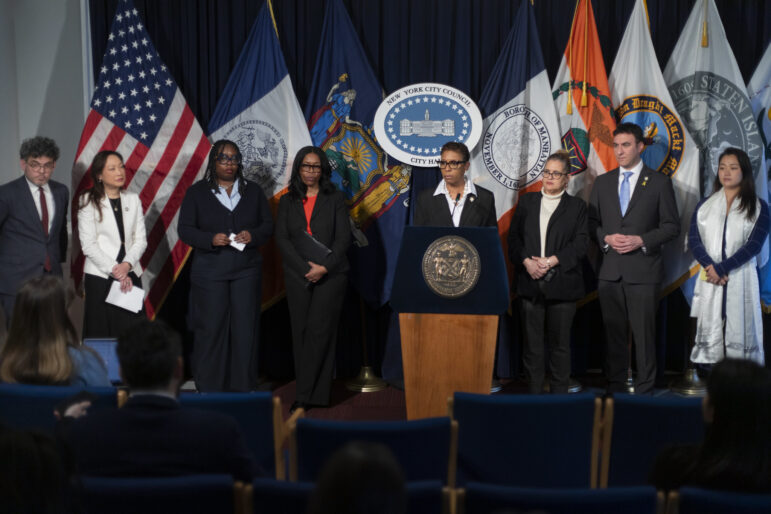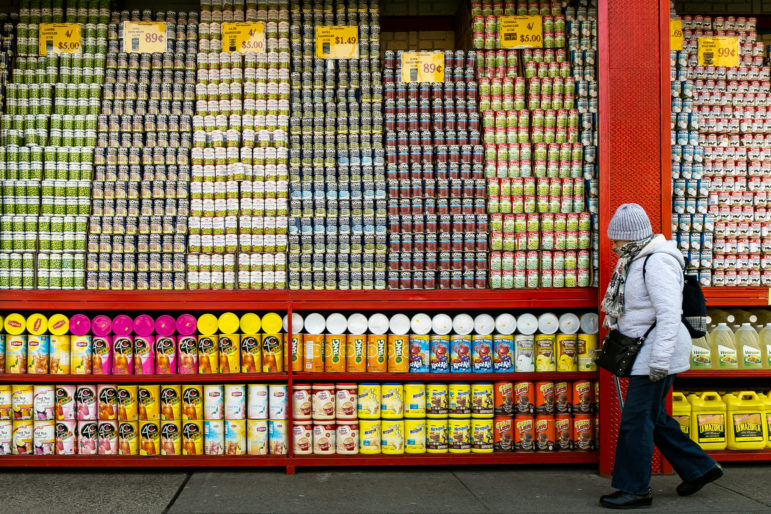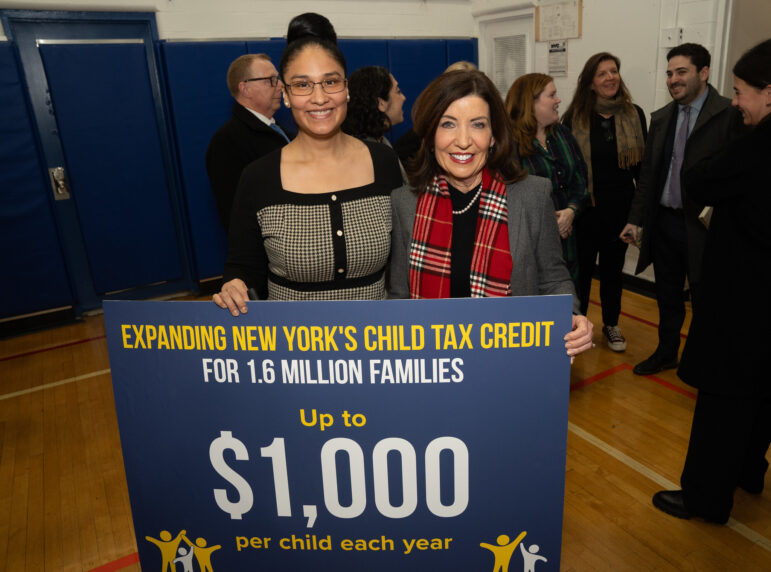
Photo by: Marc Fader
What does it mean to be “Brooklyn?” No borough in the city—perhaps no other urban place in America—has the kind of name recognition that Brooklyn enjoys.
Somewhere on the westbound Brooklyn-Queens Expressway, past Newtown Creek and the low rooftops of South Williamsburg but before the Jehovah’s Witnesses headquarters, drivers pass a billboard for Junior’s, the 60-year-old restaurant and cheesecake emporium on Flatbush Avenue.
“As Brooklyn as it gets,” the sign proclaims.
What does it mean to be “Brooklyn?” No borough in the city—perhaps no other urban place in America—has the kind of name recognition that Brooklyn enjoys. From Neil Simon plays to Jay-Z songs, Brooklyn has long had a prominent cultural profile. And in the past 10 years, Brooklyn has embodied New York’s boom, from the boutiques that dot once-gritty Red Hook to the luxury high-rises of Fort Greene. But does Brooklyn’s cultural mystique—or the view from Red Hook or Fort Greene—reflect reality throughout the borough? The new edition of City Limits seeks the borough behind Brooklyn’s brand.
The Brooklyn name itself has evolved into a powerful marketing tool, for products made—or not—in the borough. There is, of course, Brooklyn Lager and Brooklyn Industries, and there are also Brooklyn Brine pickles, Brooklyn perfume and Absolut Brooklyn vodka, an apple-and-ginger-flavored spirit endorsed by another figure from the Junior’s wall of fame, Spike Lee, but not on the menu at the Brooklyneer, a Brooklyn-themed bar and restaurant … on Manhattan’s West Houston Street.
It is all meant, in a branding sense, to evoke something. But what?
“Dere’s no guy livin’ dat knows Brooklyn t’roo an’ t’roo,” the North Carolinian Thomas Wolfe once wrote, in what might have struck him and the New Yorker’s editors as Brooklynese, “because it’d take a guy a lifetime just to find his way aroun’ duh goddam town.” James Agee, another Southerner, put it more elegantly: “In the conviction of the body, there seems almost no conceivable end to Brooklyn; it seems, on land as flat and huge as Kansas, horizon beyond horizon forever unfolded, an immeasurable proliferation of house on house and street on street; or seems as China does, infinite in time in patience and in population as in space.”
It is a land, in short, with a mystique—one that is hard to pin down but easy to recognize. Maggio, the tough, doomed GI in From Here to Eternity, was from Brooklyn. So was Tony Manero in Saturday Night Fever, dreaming of glory and working in a Bay Ridge hardware store. So are Jay-Z, one-third of the Beastie Boys and Neil Diamond. So, as the writer Levi Asher (from Queens) points out, was Bugs Bunny. Something besides location—an attitude—links them all together. When Marty Markowitz, the borough’s voluble president, unveiled wisecracking highway signs, “Leaving Brooklyn—Fuhgeddaboudit,” even people just passing through got the joke.
When you’re out of town and you tell people you’re from Brooklyn, says Karen Buryiak, a Junior’s waitress who grew up in Flatbush, people know what you’re talking about. It brings an idea to mind.
“Usually it’s the tough-guy thing,” she muses. “But now I think it’s changing a little bit. You’ve got the hipster thing going on a little bit.”
There is reason to wonder if the image ever matched reality. The borough was never populated exclusively by wisecracking hustlers or tough guys with hearts of gold, just as it isn’t wall-to-wall with hipsters now.
“Like Queens and the Bronx and Staten Island,” Asher writes, “the outer boroughs are where the service industry lived, and still lives. Plumbers, cab drivers, teachers, factory workers, receptionists, tailors, fry cooks, executive assistants—it’s this economic sector that makes Brooklyn Brooklyn.”
Something, though, has shifted of late. There are Brooklyn tourists now, drawn over the bridge by guidebooks or carried by tour buses that stop at Junior’s for lunch. Brooklyn now is a destination. The borough that was defined by its outsider status, that drew its defining scrappiness and even hipness from its littlebrother relationship to the metropolis next door, now has a following of its own. In Park Slope, Fort Greene and even Red Hook, taxis from across the river ferry Manhattanites to trendy restaurants. Rents are higher in Dumbo, with its vintage modernist furniture stores, than in some parts of the Upper East Side.
Brooklyn even has skyscrapers, a cluster of new residential towers just up Flatbush Avenue from Junior’s, glassy and full of freshly minted Brooklynites. Their coming is celebrated as proof of Brooklyn’s emergence. But is it the same Brooklyn, the real Brooklyn, that they are coming to, or is it a new place that they have made?
Some things have been lost. In becoming something new, the borough has left behind much of what once made it known. Brooklyn Brewery is thriving, but Schaefer is long gone, the site of its old brewery on the Williamsburg waterfront now home to a condominium building that glows neon at night. Scores of other industrial and manufacturing companies have followed, out of Brooklyn or out of existence altogether. This is the trade that has accompanied hipness: new residents in and old jobs out. People have left too, for the suburbs or the less expensive boroughs, and they have taken some of the character with them. Whether it will come back is an open question.
So the image of the shiny new Brooklyn has a darker side, one of negative changes that accompanied all the cool, new stuff. But perhaps more importantly, the popular image of the borough suffers simply from limitations. The fact is, most of the borough—which would be the country’s fourth largest city if it were independent— exists distinct from hipsters, high-rises and padlocked factories.
The new Brooklyn mystique leaves out vast swaths of the borough—from Karen Buryiak’s Flatbush, where you can now stroll down Bob Marley Boulevard or dine on Afghan cuisine, to her father’s Brownsville, which sank, like neighboring East New York, into the abyss of blight before starting to claw itself out. The popular image leaves out the Canarsie of Allen Fleming, the general manager of Junior’s, who arrived there 20 years ago from Grenada, and it leaves out Bensonhurst, where storefront signs change from Yiddish to Chinese in the space of a few blocks.
All those places, and dozens more, make up a modern Brooklyn too complex to fit in a slogan. The recent rise of one part of Brooklyn, then, has obscured all the other rises, falls and evolutions happening in the borough at the same time. This conceals, from other urban areas that may want to emulate its rise, the lessons Brooklyn has to offer: why the new affluent people came to places like Fort Greene, why the old businesses left areas like Bedford-Stuyvesant and how other neighborhoods charted their own separate courses of change.
And it prevents New Yorkers from understanding their own history over the past decade, which Brooklyn embodies but which is too often told as a tale that begins and ends with real estate development. Simply put, there’s more to it than that.
In the chapters that follow are a few of the stories of today’s Brooklyn—stories of the changes everyone has noticed and of the others as well. Along with the consequences.
“Too much change can actually be harmful in a way,” Buryiak says between customers. “So I hope they keep enough of the good old stuff in Brooklyn not to risk losing its integrity.” She pauses, answers a few more questions, then repeats, “Hopefully, there’ll be enough of the good old stuff.”







